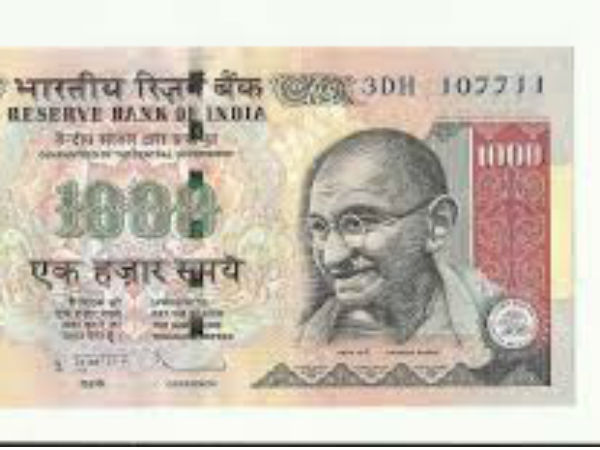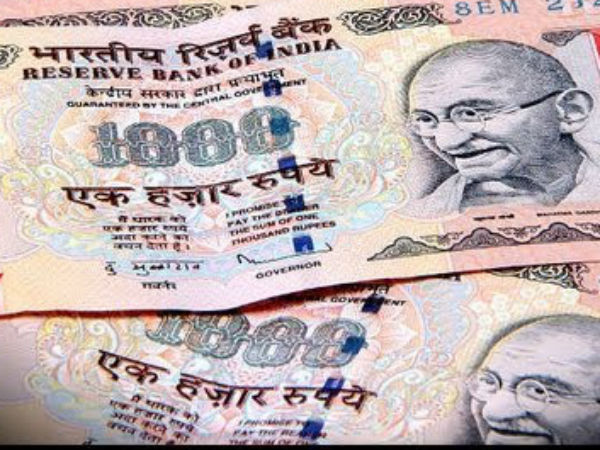How To Identify A Real Rs 1,000 Note From A Fake One?
Here are ways to identify a real Rs 1,000 note from a fake one. The Government of India decided that the Rs 500, Rs 1000 notes will no longer be legal tender from the midnight of 8th November 2016.
You have to now exchange your old Rs 500 and all Rs 1,000 notes at the bank as the Government of India decided that the Rs 500, Rs 1000 notes will no longer be legal tender from the midnight of 8th November 2016.
The move was aimed to fight against corruption, black money, money laundering, terrorism and financing of terrorists as well as counterfeit notes. Here are ways to identify a fake Rs 1,000 note from a real one.


Security thread
Rs 1000 notes introduced in October 2000 contain a readable, windowed security thread alternately visible on the obverse with the inscriptions ‘Bharat' (in Hindi), ‘1000' and ‘RBI', but totally embedded on the reverse. The Rs 500 and Rs 100 notes have a security thread with similar visible features and inscription ‘Bharat' (in Hindi), and ‘RBI'. When held against the light, the security thread on Rs 1000, Rs 500 and Rs.100 can be seen as one continuous line. The Rs 5, Rs 10, Rs 20 and Rs 50 notes contain a readable, fully embedded windowed security thread with the inscription ‘Bharat' (in Hindi), and ‘RBI'. The security thread appears to the left of the Mahatma's portrait. Notes issued prior to the introduction of the Mahatma Gandhi Series have a plain, non-readable fully embedded security thread.

Latent Image
On the obverse side of Rs.1000, Rs.500, Rs.100, Rs.50 and Rs.20 notes, a vertical band on the right side of the Mahatma Gandhi's portrait contains a latent image showing the respective denominational value in numeral. The latent image is visible only when the note is held horizontally at eye level.

Microlettering
This feature appears between the vertical band and Mahatma Gandhi portrait. It contains the word ‘RBI' in Rs.5 and Rs.10. The notes of Rs.20 and above also contain the denominational value of the notes in microletters. This feature can be seen better under a magnifying glass.

Intaglio Printing
The portrait of Mahatma Gandhi, the Reserve Bank seal, guarantee and promise clause, Ashoka Pillar Emblem on the left, RBI Governor's signature are printed in intaglio i.e. in raised prints, which can be felt by touch, in Rs.20, Rs.50, Rs.100, Rs.500 and Rs.1000 notes.

Identification mark
A special feature in intaglio has been introduced on the left of the watermark window on all notes except Rs.10/- note. This feature is in different shapes for various denominations (Rs. 20-Vertical Rectangle, Rs.50-Square, Rs.100-Triangle, Rs.500-Circle, Rs.1000-Diamond) and helps the visually impaired to identify the denomination.

Watermark
The Mahatma Gandhi Series of banknotes contain the Mahatma Gandhi watermark with a light and shade effect and multi-directional lines in the watermark window.
Information courtesy: RBI
































